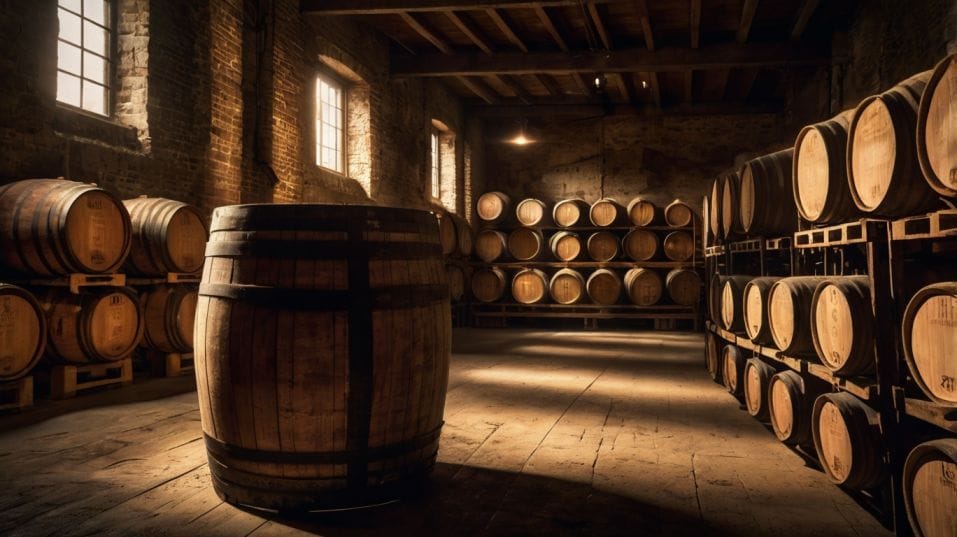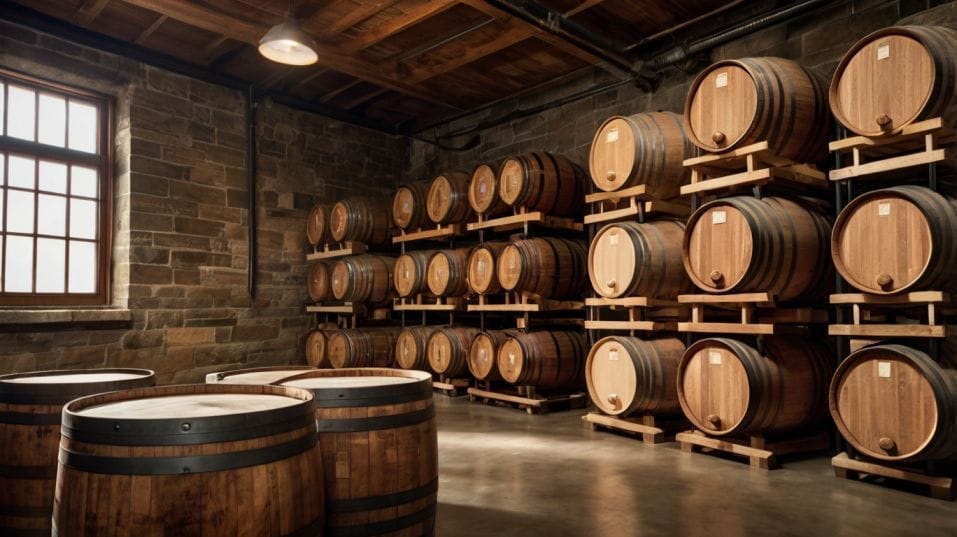How Aging Affects Flavor (With Tasting Examples)
Discover how aging transforms whiskey flavor—plus tips, examples, and expert insights to help you sip smarter and collect with confidence.

What actually changes in a whiskey as it ages—and how can you taste it? If you're new to the world of whiskey, this is where things get fascinating.
Aging doesn’t just mellow a spirit—it transforms it, adding depth, texture, and character you can actually recognize in the glass.
Once you learn what time does to flavor, you’ll drink with more focus, collect more wisely, and unlock layers most casual drinkers never notice.
What Really Happens When Whiskey Ages?
The moment new-make spirit hits the barrel, the aging process begins—but not in a passive way. Whiskey aging is an active chemical conversation between spirit, wood, air, and time.
You’re not just letting it “sit” for years. You’re allowing it to evolve in a dynamic environment.
Inside the barrel, the whiskey expands and contracts with changes in temperature. That movement pushes the liquid in and out of the wood’s surface, extracting compounds like vanillin, lactones, tannins, and lignins.
These contribute everything from vanilla and spice to structure and bitterness. Meanwhile, oxidation softens harsh elements in the spirit, rounds out the flavor, and introduces entirely new ones.
That’s why a barrel stored in a Kentucky rickhouse ages faster than one in a damp Scottish warehouse. Climate plays a massive role.
Hotter environments increase evaporation and accelerate extraction. Cooler, stable climates produce a slower, subtler transformation. Neither is better—just different. But if you care about flavor, these variables matter.

What Aging Tastes Like—And How to Spot It
You don’t need a chemistry degree to understand aging. You need your palate—and a little focused comparison.
Start with something young. A 2- to 4-year whiskey tends to taste grain-forward and a little wild. You'll likely pick up raw corn, malted barley, or rye spice in a more obvious, unbalanced way.
The sweetness is often high-pitched—think cotton candy, fresh dough, or banana taffy. Texture? Usually thin. Finish? Short, with a sharp exit.
Now try something 10 to 12 years old, same type of whiskey, ideally same mashbill. It’s a completely different experience. The sweetness has matured into dark caramel, brown sugar, or toffee.
Grain notes become subtle backdrops instead of lead players. New flavors emerge—tobacco, leather, dried fruit, even herbal or nutty tones.
The oak shows up not as a flavor but as structure. The whiskey feels more composed, more patient. It lingers.
With older whiskey—15 years or more—you start to see flavors that are harder to name. That’s a sign of complexity.
A whiskey might remind you of antique wood, cigar boxes, aged balsamic, old books, even earth. These aren’t gimmicky tasting notes. They’re evidence of a slow chemical evolution you can’t fake or speed up.
The Danger of Over-Aging
Let’s clear something up: older isn’t always better. Barrels don’t age whiskey forever. There’s a tipping point—especially in hotter climates—where the wood starts to dominate, and the spirit loses its voice.
Over-aged whiskey can turn dry, bitter, and tannic. It might taste like pencil shavings, stale coffee grounds, or over-steeped tea. The richness is gone. What's left is more interesting than enjoyable.
A smart drinker doesn’t chase the highest age statement. You chase balance. That perfect middle ground where the whiskey has gained complexity but hasn’t lost its original character.
That might be 8 years for a rye. It might be 15 for a sherried Scotch. It depends on the grain, the barrel, the climate—and the judgment of the people aging it.
If you're tasting something that feels like licking a barrel stave, that's not prestige. That's a missed opportunity.
Barrel Variables That Shape Aging
Aging isn’t just about the passage of time—it’s about the context in which time unfolds. Every factor affects what ends up in the glass:
- Barrel type: American oak gives vanilla, caramel, coconut, and baking spice. European oak brings darker notes—clove, raisin, dried fig, and tannic grip.
- Barrel size: Smaller casks speed up extraction but don’t allow the same kind of slow integration as larger barrels. Faster isn’t deeper.
- Char level: Heavily charred barrels provide more caramelization and allow the spirit to penetrate deeper. Lighter toasts emphasize fruit and floral notes.
- Warehouse environment: Top-floor barrels age faster due to higher temperatures. Bottom-floor barrels age slower, sometimes more evenly.
- Entry proof: Higher entry proof pulls out different compounds than lower proof, often leading to bolder but drier whiskey. Lower proof may preserve more sweetness and ester character.
All these elements play off each other. Two whiskeys aged for the same amount of time can taste radically different depending on these variables. That’s why understanding aging makes you a better taster—and a better buyer.
How to Train Your Palate on Aging
Want to really learn what aging does to flavor? Don’t just read about it—build tasting sessions that test your instincts.
Start with horizontal tastings: same distillery, same mashbill, same barrel entry proof—different age statements. This isolates age as the main variable.
Look at how the flavors evolve. Take your time with the older pours. Don’t rush it. Let the whiskey unfold.
Next, try vertical tastings: different distilleries, same age. This helps you see how aging interacts with production style.
A 10-year-old wheated bourbon might feel soft and round. A 10-year-old rye might feel spicy and lean. A 10-year-old peated Scotch might feel smoky but sweet, with surprising fruit.
If you can, do it blind. Strip away brand bias. You’ll find out fast whether you actually prefer older whiskey—or just thought you were supposed to.
Pay close attention to:
- Texture: Does it coat your mouth or vanish quickly?
- Aroma layers: Do new notes emerge over time or is it one-dimensional?
- Finish: Does the flavor evolve after you swallow, or does it drop off?
Aging isn’t just a flavor—it’s a feeling. Once you start noticing how the years change the experience in your glass, you stop drinking for the buzz and start drinking for the detail.
Final Thoughts
Aging isn’t hype. It’s craft. It’s chemistry. It’s the long game that separates forgettable whiskey from the kind that keeps pulling you back.
But here’s the real power: when you understand aging, you stop drinking passively. You stop buying on label or trend. You start tasting on purpose. You ask better questions, make smarter trades, and build a collection with depth—not just age.
So here’s your next move: set up a tasting with whiskeys across three age ranges. Go slow. Take notes. Don’t look at the labels until the end.
Let your palate—not the marketing—tell you what time has done. You're not just drinking whiskey. You're learning its language. Keep listening.




